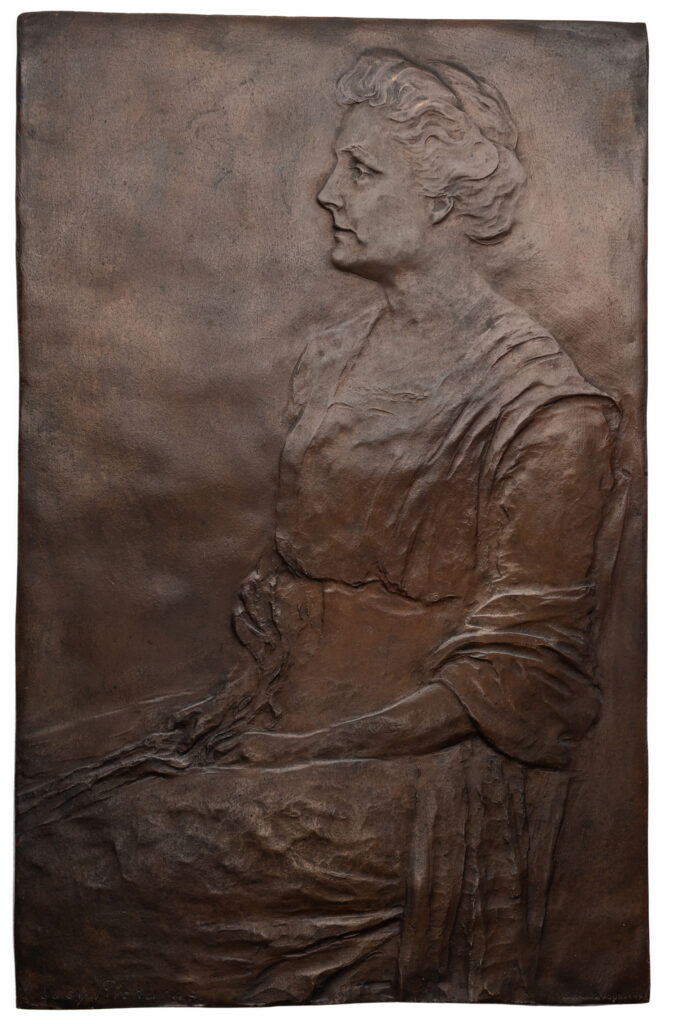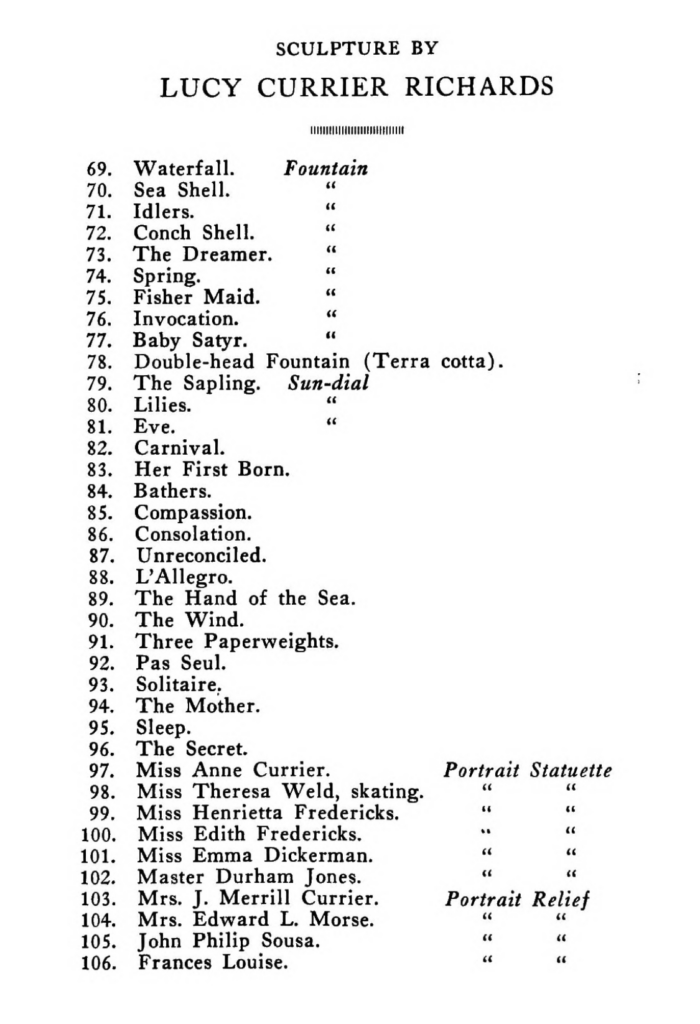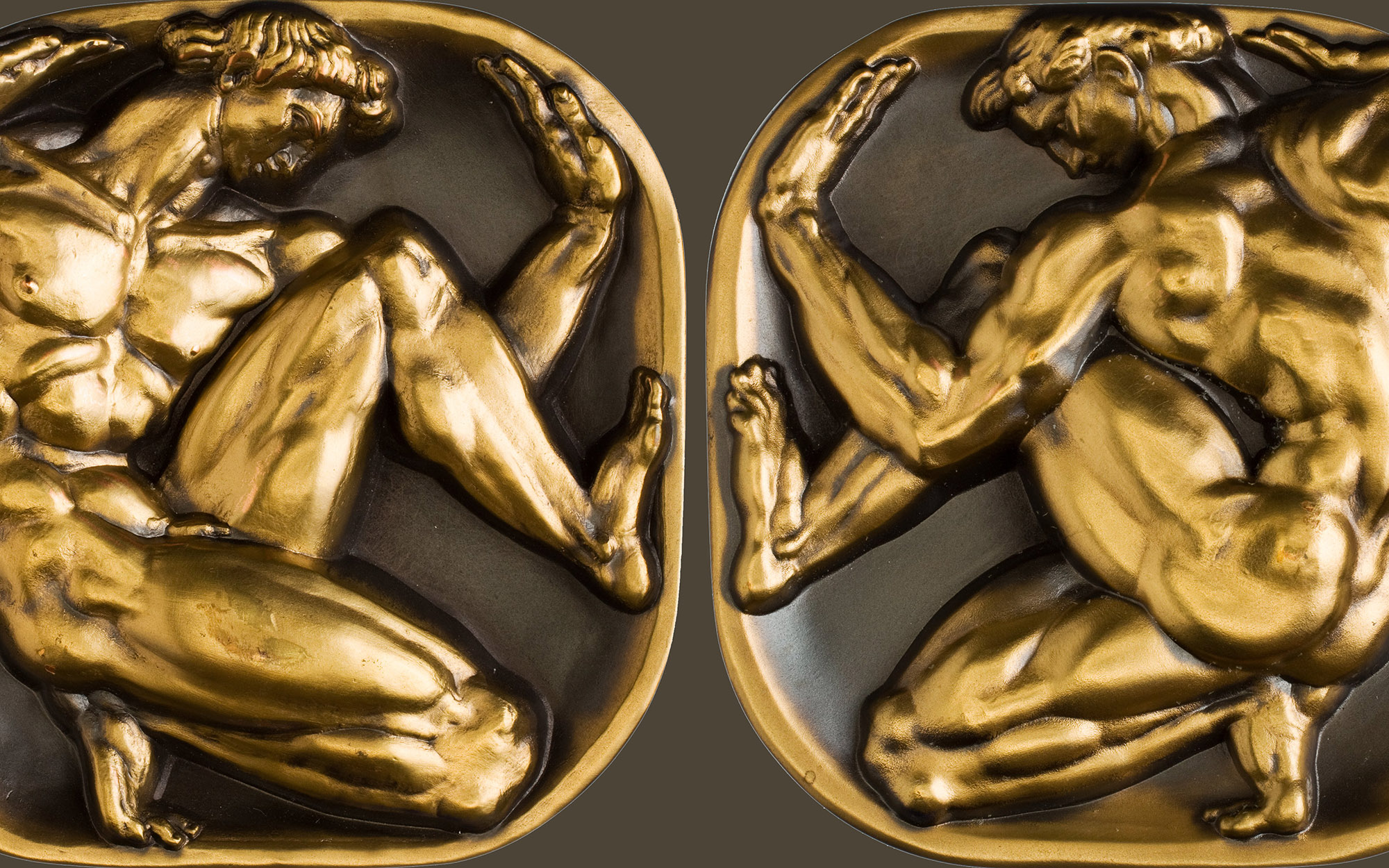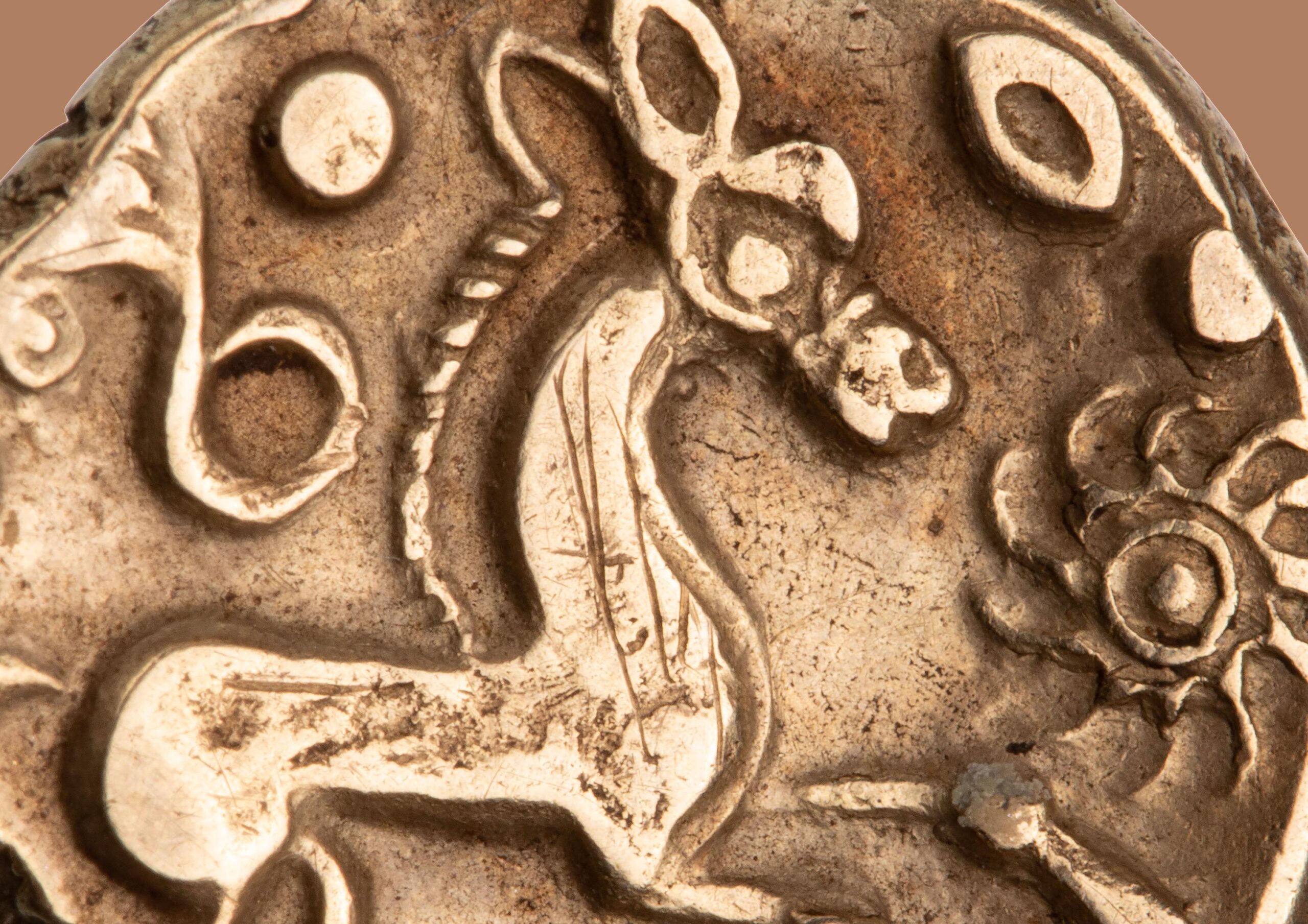Lucy Richards, Sculptor
By Scott H. Miller (ANS Life Fellow)
Coins, and by extension medals, have long been referred to as a permanent means of conveying history. Generally made of metal, they can survive for thousands of years. Unfortunately, most of the people who created these objects are often forgotten, assuming they were ever known beyond their own, intimate circle. It is a sad fact that most artists seldom achieve any fame, and their work is rarely catalogued. Within the American medallic world, a few artists, such as Augustus Saint-Gaudens and Paul Manship, are subjects of multiple works. Most, however, are relegated to obscurity, little more than a name associated with an item that comes up for sale on occasion. One such figure is the Boston sculptor Lucy Currier Richards-Wilson, creator of many works of art in bronze, ranging from wall fountains to portrait statuettes and portrait relief plaques (Fig. 1).

Lucy Pike Currier was born on April 21, 1870, in Lawrence, Massachusetts to John and Sarah Currier. She married Herbert W. Richards in Boston Massachusetts on June 7, 1895, and had at least one child, Amelia Richards, born March 5, 1896. Although no photo of Mrs. Richards has been located, her 1898 passport application describes her as 5 feet 4½ inches tall with brown eyes, brown hair, and dark complexion. The marriage was probably not a happy one, as the couple were soon living apart. In the 1900 Federal census, Lucy and Amelia are listed as residing at a hotel at 10 & 12 Chapel Avenue, Andover, Massachusetts, with no occupation listed.
The first record found of Lucy’s artistic talent is in 1905, in the Museum of Fine Arts Twenty-Ninth Annual Report of the Museum School. She is listed as one of four students in the Department of Modelling who received a diploma. She is also mentioned among the winners of the Kimball Prizes for Modelling Classes, receiving first prize of $75. A look at those awarded diplomas indicate an overwhelming number of women, including all ten students in the Department of Drawing and Painting, all four students in the Department of Modelling, and seven of twelve students in the Department of Design.
Biographical notices of the period, which are often found in exhibition catalogues and art annuals, provide some basic information about Richards. They indicate she studied at the Boston Museum School, with Kops in Dresden, Eustritz in Berlin, and at the Julian Academy in Paris. Richards was a member of the Copley Society of Boston, the Guild of Boston, National Association of Women Painters and Sculptors, New York, and the MacDowell Club. Examination of Richards claim of having studied with Kops and Eustritz are difficult to verify. It is likely that her studies occurred during her trip in 1898, and that the names of her teachers were mangled, either by Richards or the typesetters, as searches for sculptors with those names proved unsuccessful. Kops was almost certainly portrait-painter Franz Kops (1846–1896), but could also have been sculptor Joseph von Kopf (1827-1903), while Eustritz was Cuno von Uechtritz-Steinkirch (1856-1908), whose students included another American, Harriet Frishmuth.
Although newspaper accounts of Lucy’s work are virtually non-existent, several mentions of her work can be found in the reports of various organizations, as well as exhibition catalogues. The American Art Annual, for example, noted an exhibition in Oregon at the Portland Art Association beginning May 26, 1911, consisting of “Twenty-eight paintings by distinguished American artists, by the courtesy of William Macbeth, of New York; figurines by Mrs. Lucy Currier Richards and paintings by Adelaide Magner…”. Her work was also regularly shown at the Pennsylvania Academy of Fine Arts annual exhibitions. By the middle of the decade, Richards had exhibited a considerable number of pieces. A show at the Guild of Boston Artists in December 1915 included 31 of her works. The following December, 37 works were included in the Exhibition of Sculpture at the Memorial Art Gallery, Rochester, New York (Fig. 2). Among these were four portrait reliefs.

Curiously, the 1933 American Art Annual’s entry on Lucy Richards listed her as still living in Silvermine, Norwalk, Connecticut, unaware that she had passed away over a decade earlier. This has led to the present-day erroneous claim that she was active from 1906–1933. On October 10, 1918, Lucy Currier Richards married Frank Palmer Wilson, who was employed in New York as a Special Attorney of Appraisements and Customs. Unfortunately, Richards died less than a year later, passing away unexpectedly on August 31, 1919, after an operation (Fig. 3).

She was buried at Grove Cemetery, Belfast, Maine, under the name Lucy P. C. Wilson. A memorial exhibition of Richards’ work was held by the Guild of Boston Artists in October 1919, which included work by Anna Coleman Ladd, best-remembered today for her the masks she sculpted for soldiers who suffered facial wounds during First World War.




